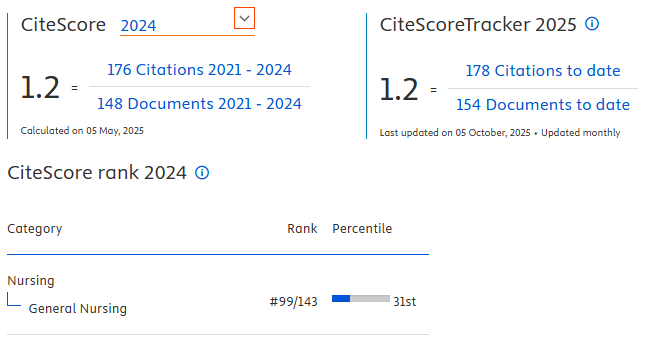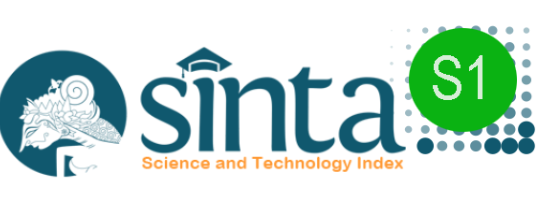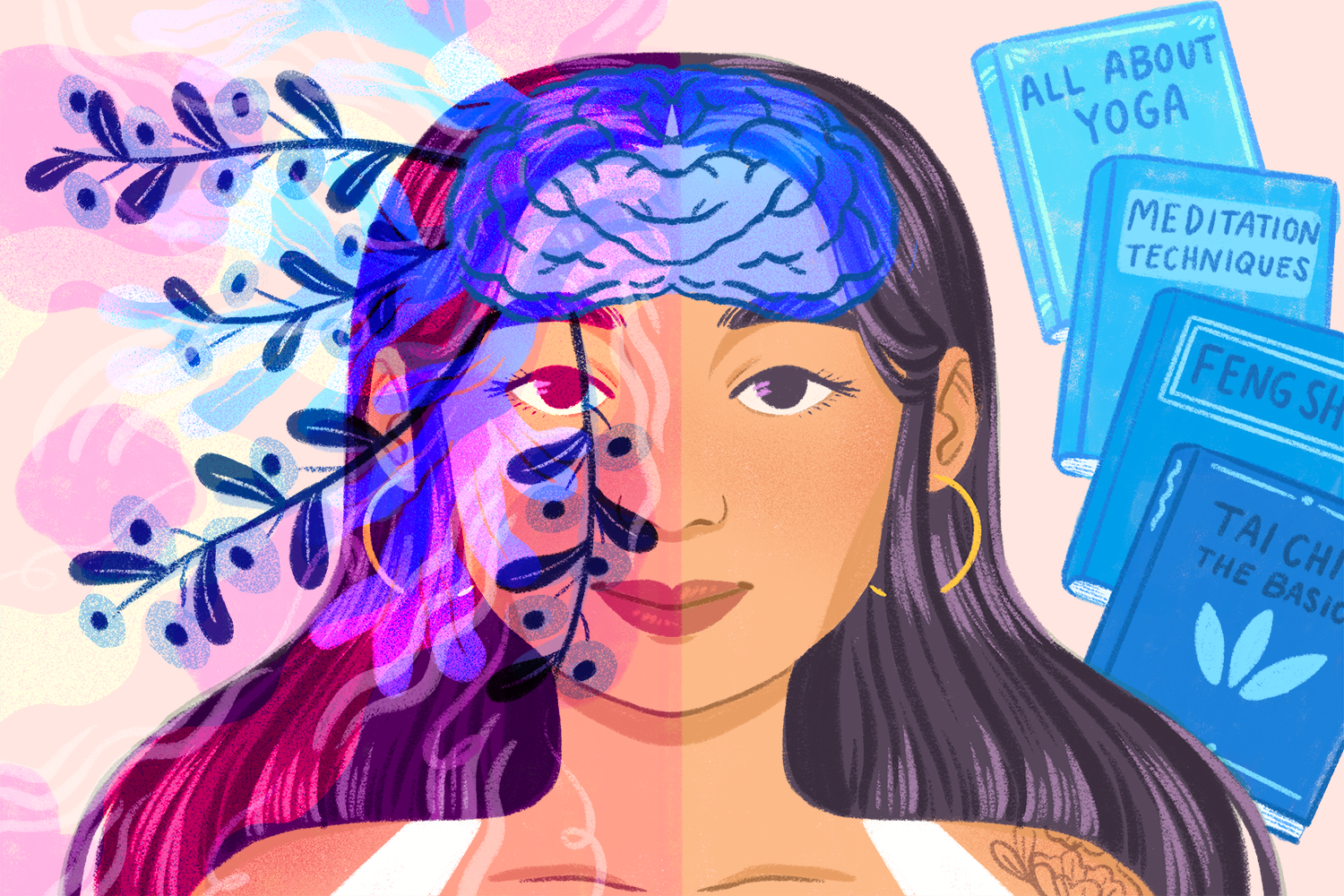Digital innovations for adolescent mental health: evaluating the impact of genziheal web-based education model

Downloads
Introduction: Mental health problems among adolescents remain a global public health concern, highlighting the need for accessible and innovative educational interventions. This study evaluated the effectiveness of a web-based mental health education model through the Genziheal platform in improving knowledge levels and reducing symptoms of mental health disorders among adolescent students.
Methods: A quasi-experimental, pretest-posttest control group design was employed involving 130 senior high school students (intervention group: n=80; control group: n=50). Data were collected using the Self-Reporting Questionnaire-29 (SRQ-29) and a validated mental health knowledge questionnaire. Paired t-test and Mann-Whitney tests were used for analysis.
Results: The intervention group demonstrated a significant increase in mental health knowledge (mean score improved from 11.0 ± 2.8 to 12.2 ± 3.2; p = 0.008), while no significant change was observed in the control group. However, no significant differences were found in mental health symptoms between pre- and post-test stages in both groups (p > 0.05).
Conclusions: The Genziheal platform effectively enhanced students’ mental health literacy but did not significantly reduce symptoms of mental health disorders. These findings suggest that web-based educational tools can support mental health awareness among adolescents but should be complemented with parental involvement and professional support to address psychological symptoms. This study also highlights the potential integration of digital mental health interventions into school-based health promotion programs. The findings contribute to the development of scalable, culturally contextualized digital health promotion tools, particularly in resource-constrained settings such as Indonesia.
Anttila, M. et al. (2019) ‘Impact of a web program to support the mental wellbeing of high school students: A Quasi experimental feasibility study’, International Journal of Environmental Research and Public Health, 16(14). doi: 10.3390/ijerph16142473.
Arango, C. et al. (2018) ‘Preventive strategies for mental health’, The Lancet Psychiatry, 5(7), pp. 591–604. doi: 10.1016/S2215-0366(18)30057-9.
Barkhordari-Sharifabad, M, Vaziri-Yazdi, S. and Barkhordari-Sharifabad, Mansoureh (2020) ‘The effect of teaching puberty health concepts on the basis of a health belief model for improving perceived body image of female adolescents: a quasi-experimental study’, BMC Public Health, 20, p. doi: 10.1186/s12889-020-08482-2.
Basu, S. and Banerjee, B. (2020) ‘Impact of environmental factors on mental health of children and adolescents: A systematic review’, Children and Youth Services Review, 119, p. 105515. doi: https://doi.org/10.1016/j.childyouth.2020.105515.
Blakemore, S. J. (2019) ‘Adolescence and mental health’, The Lancet, 393(10185), pp. 2030–2031. doi: 10.1016/S0140-6736(19)31013-X.
Brons, M. E. et al. (2023) ‘Time trends in associations between neighbourhood and school characteristics and mental health problems among Dutch adolescents’, Health and Place, 84(November), p. 103140. doi: 10.1016/j.healthplace.2023.103140.
Carey, N. et al. (2024) ‘Emerging Adult Mental Health During COVID: Exploring Relationships Between Discrete and Cumulative Individual and Contextual Stressors and Well-Being’, Journal of Adolescent Health. doi: https://doi.org/10.1016/j.jadohealth.2024.01.031.
Chicca, J. and Shellenbarger, T. (2018) ‘Connecting with Generation Z: Approaches in Nursing Education’, Teaching and Learning in Nursing, 13(3), pp. 180–184. doi: 10.1016/j.teln.2018.03.008.
Das, J. K. et al. (2016) ‘Interventions for Adolescent Mental Health: An Overview of Systematic Reviews’, Journal of Adolescent Health, 59(4), pp. S49–S60. doi: 10.1016/j.jadohealth.2016.06.020.
Deighton, J. et al. (2019) ‘Prevalence of mental health problems in schools: Poverty and other risk factors among 28 000 adolescents in England’, British Journal of Psychiatry, 215(3), pp. 565–567. doi: 10.1192/bjp.2019.19.
Deng, J. et al. (2023) ‘Prevalence of mental health symptoms in children and adolescents during the COVID-19 pandemic: A meta-analysis’, Annals of the New York Academy of Sciences, 1520(1), pp. 53–73. doi: https://doi.org/10.1111/nyas.14947.
Fadaei, M. et al. (2020) ‘Promoting drug abuse preventive behaviors in adolescent students based on the health belief model’, International Journal of Adolescent Medicine and Health, 34, p. doi: 10.1515/ijamh-2019-0170.
Feiss, R. et al. (2019) ‘A Systematic Review and Meta-Analysis of School-Based Stress, Anxiety, and Depression Prevention Programs for Adolescents’, Journal of Youth and Adolescence, 48(9), pp. 1668–1685. doi: 10.1007/s10964-019-01085-0.
Fitryasari, R., Tristiana, R. D. and Yusuf, A. (2021) ‘Teenagers’ Safety Smartphone Use Model Based on Health Promotion Theory’, Jurnal Ners, 16(2), pp. 148–154. doi: 10.20473/jn.v16i2.29650.
Haddock, A. et al. (2022) ‘Positive Effects of Digital Technology Use by Adolescents: A Scoping Review of the Literature’, International Journal of Environmental Research and Public Health. MDPI. doi: 10.3390/ijerph192114009.
Heizomi, H. et al. (2020) ‘Effects of a mental health promotion intervention on mental health of Iranian female adolescents: A school-based study’, Child and Adolescent Psychiatry and Mental Health, 14(1). doi: 10.1186/s13034-020-00342-6.
Iglhaut, L. et al. (2024) ‘Evaluation of a web-based information platform on youth depression and mental health in parents of adolescents with a history of depression’, Child and Adolescent Psychiatry and Mental Health, 18(1). doi: 10.1186/s13034-023-00703-x.
I-NAMHS (2022) ‘I-NAMHS: Indonesia – National Adolescent Mental Health Survey’, Indonesia – National Adolescent Mental Health Survey (I-NAMHS): Laporan Penelitian. Pusat Kesehatan Reproduksi. Available at: https://qcmhr.org/outputs/reports/12-i-namhs-report-bahasa-indonesia.
Itani, O. et al. (2018) ‘Longitudinal Epidemiologic Study of Poor Mental Health Status in Japanese Adolescents: Incidence of Predictive Lifestyle Factors’, The Journal of Clinical Psychiatry, 79. doi: 10.4088/JCP.17m11516.
Karataş, T. et al. (2021) ‘Mental Health and Substance Use among Adolescents during the COVID-19 Pandemic: A Mini Review’, The Lancet. 2018/09/13, 72(3), pp. 565–567. doi: 10.23880/pprij-16000287.
Khajavi, N. et al. (2024) ‘The effects of web-based education on health-promoting behaviors of first-year medical sciences students: A quasi-experimental study’, Journal of Education and Health Promotion, 13(1). doi: 10.4103/jehp.jehp_569_23.
Khoshnood, Z., Rayyani, M. and Tirgari, B. (2018) ‘Theory analysis for Pender’s health promotion model (HPM) by Barnum’s criteria: a critical perspective.’, International journal of adolescent medicine and health, 32(4). doi: 10.1515/ijamh-2017-0160.
Lattie, E. G. et al. (2019) ‘Digital mental health interventions for depression, anxiety and enhancement of psychological well-being among college students: Systematic review’, Journal of Medical Internet Research, 21(7). doi: 10.2196/12869.
Laurenzi, C. A. et al. (2024) ‘Development of a school-based programme for mental health promotion and prevention among adolescents in Nepal and South Africa’, SSM - Mental Health, 5. doi: 10.1016/j.ssmmh.2023.100289.
Lehtimaki, S. et al. (2021) ‘Evidence on Digital Mental Health Interventions for Adolescents and Young People: Systematic Overview’, JMIR mental health, 8(4), pp. e25847–e25847. doi: 10.2196/25847.
Liu, J. et al. (2023) ‘Geographic and Sociodemographic Variations in Prevalence of Mental Health Symptoms Among US Youths, 2022’, American Journal of Public Health, 113(10), pp. 1116–1119. doi: 10.2105/AJPH.2023.307355.
Mfidi, F. H., Thupayagale-Tshweneagae, G. and Akpor, O. A. (2018) ‘The TEAM model for mental health promotion among school-going adolescents’, Journal of Child and Adolescent Mental Health, 30(2), pp. 99–110. doi: 10.2989/17280583.2018.1485570.
Nobiling, B. and Maykrantz, S. (2017) ‘Exploring Perceptions about and Behaviors Related to Mental Illness and Mental Health Service Utilization among College Students Using the Health Belief Model (HBM)’, American Journal of Health Education, 48, pp. 306–319. doi: 10.1080/19325037.2017.1335628.
Palmer, K. et al. (2020) ‘Adolescent Autonomous Motivation for Physical Activity: A Concept Analysis’, Journal of Pediatric Nursing, 54, pp. e36–e46. doi: https://doi.org/10.1016/j.pedn.2020.04.020.
Pandia, V. et al. (2021) ‘Association of Mental Health Problems and Socio-Demographic Factors Among Adolescents in Indonesia’, Global Pediatric Health, 8(28). doi: 10.1177/2333794X211042223.
Ren, Y. and Li, M. (2023) ‘Intervention Effect of Pender’s Model on Mental Health of Patients With Diabetes Mellitus: A Meta-analysis’, Canadian Journal of Diabetes, 47(1), pp. 94–101. doi: https://doi.org/10.1016/j.jcjd.2022.05.001.
Ricoy, M. C., Martínez-Carrera, S. and Martínez-Carrera, I. (2022) ‘Social Overview of Smartphone Use by Teenagers’, International Journal of Environmental Research and Public Health, 19(22). doi: 10.3390/ijerph192215068.
Santre, S. (2022) ‘Mental Health Promotion in Adolescents’, Journal of Indian Association for Child and Adolescent Mental Health. SAGE Publications Ltd, pp. 122–127. doi: 10.1177/09731342221120709.
Shelemy, D. L., Harvey, D. K. and Waite, D. P. (2020) ‘Meta-analysis and systematic review of teacher-delivered mental health interventions for internalizing disorders in adolescents’, Mental Health & Prevention, 19, p. 200182. doi: https://doi.org/10.1016/j.mhp.2020.200182.
de Sousa, D. et al. (2022) ‘The Effectiveness of Web-Based Interventions to Promote Health Behaviour Change in Adolescents: A Systematic Review’, Nutrients. MDPI. doi: 10.3390/nu14061258.
Taghadosi, M. and Nouri, H. (2023) ‘The Effect of Education Based on “Pender Health Promotion Model” on Adherence to Treatment of Patients with Hypertension’, 12(1). Available at: https://doi.org/10.22034/JHPM.12.1.69.
Tian, L. et al. (2024) ‘Improving mental health literacy using web- or app-based interventions: A scoping review’, Digital Health. SAGE Publications Inc. doi: 10.1177/20552076241243133.
Upadhyay, A. K. et al. (2024) ‘Artificial intelligence assisted psychological well-being of generation Z’, Asian Journal of Psychiatry, 93, p. 103926. doi: https://doi.org/10.1016/j.ajp.2024.103926.
Wang, Q., Zhang, W. and An, S. (2023) ‘A systematic review and meta-analysis of Internet-based self-help interventions for mental health among adolescents and college students’, Internet Interventions, 34. doi: 10.1016/j.invent.2023.100690.
Wang, S. et al. (2020) ‘Development of a Community Health Promotion Model Based on Integrating Physical Activity and Medical Technologies’, Chinese General Practice, pp. 1529–1534. doi: 10.12114/j.issn.1007-9572.2020.00.062.
WHO (2021) Mental Health During Covid-19 Pandemic. Available at: https://www.who.int/teams/mental-health-and-substance-use/mental-health-and-covid-19 (Accessed: 7 February 2022).
Wiguna, R. I. and Suhamdani, H. (2022) ‘Impact of the “Nola J Pender” Health Promotion Model Towards the Level of Community Compliance in Implementing COVID-19 Health Protocols’, Jurnal PROMKES, 10(1), p. 85. doi: 10.20473/jpk.v10.i1.2022.85-92.
Copyright (c) 2025 Jurnal Ners

This work is licensed under a Creative Commons Attribution 4.0 International License.
Authors who publish with Jurnal Ners agree to the following terms:
- Authors transfer the Copyright and grant Jurnal Ners the right of first publication with the work simultaneously licensed under a Creative Commons Attribution 4.0 International License that allows others to remix, adapt and build upon the work with an acknowledgment of the work's authorship and of the initial publication in Jurnal Ners.
- Authors are permitted to copy and redistribute the journal's published version of the work (e.g., post it to an institutional repository or publish it in a book), with an acknowledgment of its initial publication in Jurnal Ners.
Jurnal Ners requires a formal written declaration and transfer of copyright from the author(s) for each article published. We, therefore, ask you to complete and return this form, retaining a copy for your own records. Your cooperation is essential and appreciated. Any delay will result in a delay in publication. The form can be downloaded HERE.
































